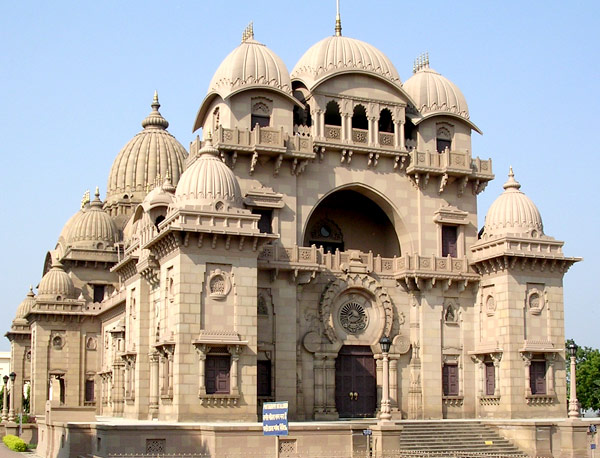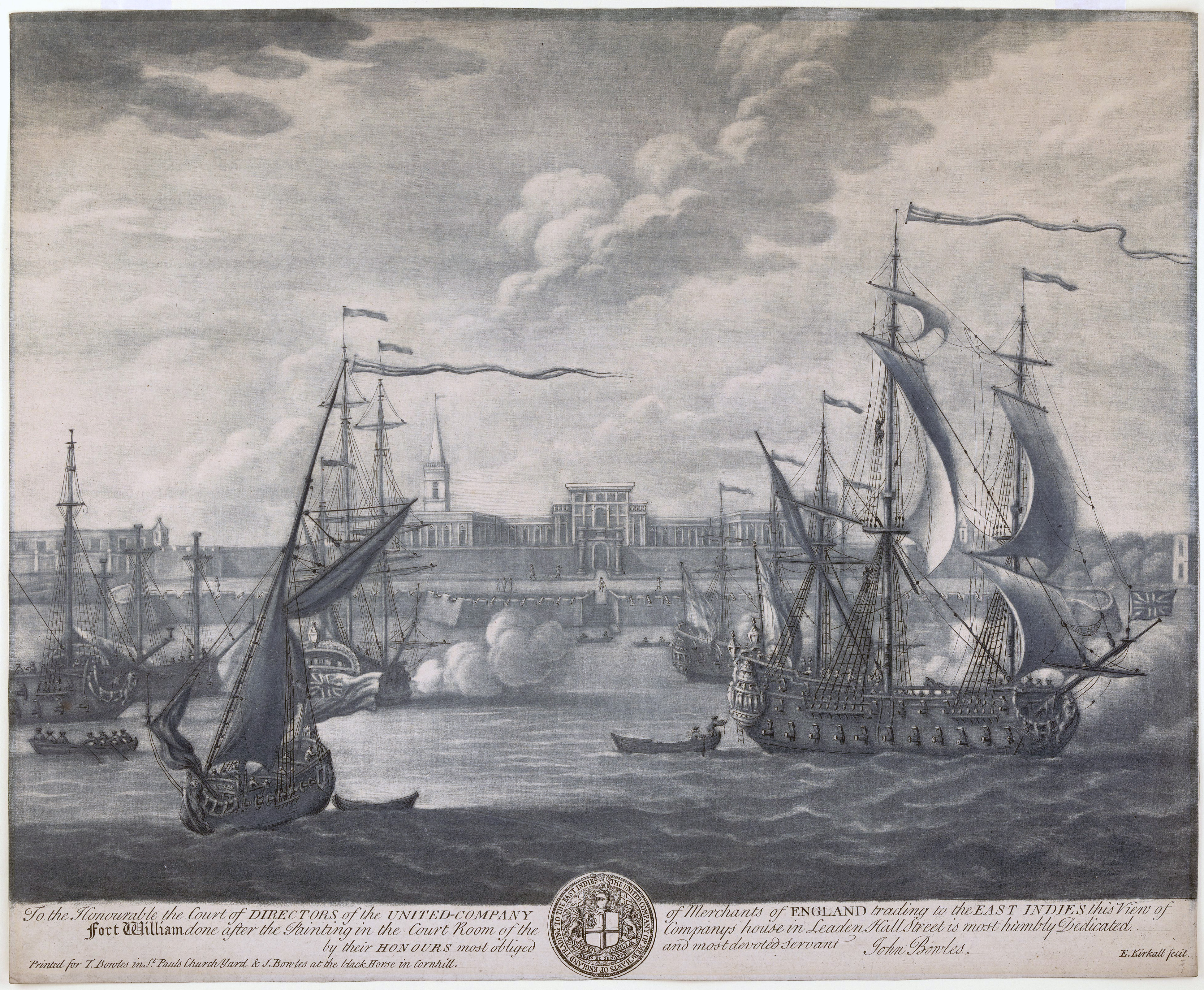|
Kalpataru Day
Kalpataru Day also called Kalpataru Diwas or Kalpataru Utsav is an annual religious festival observed by monks of the Ramakrishna Math monastic order of Hinduism and lay followers of the associated Ramakrishna Mission, as well as the worldwide Vedanta Societies. These organizations follow the teachings of Ramakrishna, the 19th century Indian mystic and figure in the Bengali Renaissance The Bengal Renaissance (Bengali: বাংলার নবজাগরণ — ''Banglar Navajagaran''), also known as the Bengali Renaissance, was a cultural, social, intellectual, and artistic movement that took place in the Bengal region of .... The event commemorates the day on 1 January 1886, when his followers believe that Ramakrishna revealed himself to be an Avatar, or God incarnate on earth. It is held each 1 January. Although the observances are held in many locations, the most significant celebration takes place at Kashipur Garden House or Udyanbati near Kolkata (then ca ... [...More Info...] [...Related Items...] OR: [Wikipedia] [Google] [Baidu] |
Ramakrishna
Ramakrishna Paramahansa ( bn, রামকৃষ্ণ পরমহংস, Ramôkṛṣṇo Pôromohôṅso; , 18 February 1836 – 16 August 1886),——— — also spelled Ramakrishna Paramahamsa, born Gadadhar Chattopadhyaya,, was an Indian Hindu mystic and religious leader; who after adhering to various religious practices from the Hindu traditions of Bhakti yoga, Tantra, and Advaita Vedanta, as well as from Islam and Christianity, proclaimed the world's various religions as "so many paths to reach one and the same goal", thus validating the essential unity of religions. Ramakrishna's followers came to regard him as an avatar, or divine incarnation, as did some of the prominent Hindu scholars of his day. Ramakrishna, who experienced spiritual ecstasies from a young age, started his spiritual journey as a priest at the Dakshineshwar Kali Temple, built by Rani Rashmoni. Soon his mystical temperament gained him widespread acclaim amongst the general public as a ... [...More Info...] [...Related Items...] OR: [Wikipedia] [Google] [Baidu] |
Ramakrishna Math
Ramakrishna Math is the administrative legal organization of the Ramakrishna Order, considered part of the Hindu reform movements. It was set up by sanyasin disciples of Ramakrishna Paramhansa headed by Swami Vivekananda at Baranagar Math in Baranagar, a place near Calcutta (now Kolkata), in 1886. India. The headquarters of Ramakrishna Math and its twin organisation, Ramakrishna Mission is at Belur Math (in West Bengal, India). Although Ramakrishna Math and Ramakrishna Mission are legally and financially separate, they are closely inter-related in several other ways and are to be regarded as twin organizations. All branch centres of Ramakrishna Math come under the administrative control of the Board of Trustees, whereas all branch centres of Ramakrishna Mission come under the administrative control of the Governing Body of Ramakrishna Mission. The Ramakrishna Math and the Ramakrishna Mission have 221 centers all over the world: *167 in India, *15 in Bangladesh, *14 in t ... [...More Info...] [...Related Items...] OR: [Wikipedia] [Google] [Baidu] |
Hinduism
Hinduism () is an Indian religion or ''dharma'', a religious and universal order or way of life by which followers abide. As a religion, it is the world's third-largest, with over 1.2–1.35 billion followers, or 15–16% of the global population, known as Hindus. The word ''Hindu'' is an exonym, and while Hinduism has been called the oldest religion in the world, many practitioners refer to their religion as '' Sanātana Dharma'' ( sa, सनातन धर्म, lit='the Eternal Dharma'), a modern usage, which refers to the idea that its origins lie beyond human history, as revealed in the Hindu texts. Another endonym is ''Vaidika dharma'', the dharma related to the Vedas. Hinduism is a diverse system of thought marked by a range of philosophies and shared concepts, rituals, cosmological systems, pilgrimage sites, and shared textual sources that discuss theology, metaphysics, mythology, Vedic yajna, yoga, agamic rituals, and temple building, among other topi ... [...More Info...] [...Related Items...] OR: [Wikipedia] [Google] [Baidu] |
Ramakrishna Mission
Ramakrishna Mission (RKM) is a Hindu religious and spiritual organisation which forms the core of a worldwide spiritual movement known as the ''Ramakrishna Movement'' or the ''Vedanta Movement''. The mission is named after and inspired by the Indian spiritual Guru Ramakrishna Paramahamsa and founded by Ramakrishna's chief disciple Swami Vivekananda on 1 May 1897. The organisation mainly propagates the Hindu philosophy of Vedanta–Advaita Vedanta and four yogic ideals– Jnana, Bhakti, Karma, and Raja yoga. Apart from religious and spiritual teaching, the organisation carries out extensive educational and philanthropic work in India and abroad. This aspect came to be a feature of many other Hindu movements. The mission bases its work on the principles of karma yoga, the principle of selfless work done with a dedication to God. The Ramakrishna Mission has centres around the world and publishes many important Hindu texts. It is affiliated with the monastic organizat ... [...More Info...] [...Related Items...] OR: [Wikipedia] [Google] [Baidu] |
Vedanta Society
Vedanta Societies refer to organizations, groups, or societies formed for the study, practice, and propagation of Vedanta, the ancient religion based on the Vedas. More specifically, they "comprise the American arm of the Indian Ramakrishna movement", and refer to branches of the Ramakrishna Order located outside India. Carl Jackson in his book, ''Vedanta for the West'' stated that, "Vedanta came to America in the form of Vedanta societies", starting with the appearance of Swami Vivekananda at the Parliament of Religions in Chicago in 1893 and his founding of the New York Society in 1894. Branches of the Ramakrishna Order located outside India are under the spiritual guidance of the Ramakrishna Order.''The Life of Swami Vivekananda'', Kolkata: Advaita Ashrama, 2000, Vol 1 p 514. The work of the Vedanta Societies in the west has primarily been devoted to spiritual and pastoral activities, though many of them do some form of social service. Many of the Western Vedanta societies ... [...More Info...] [...Related Items...] OR: [Wikipedia] [Google] [Baidu] |
Bengali Renaissance
The Bengal Renaissance (Bengali: বাংলার নবজাগরণ — ''Banglar Navajagaran''), also known as the Bengali Renaissance, was a cultural, social, intellectual, and artistic movement that took place in the Bengal region of the British Raj, from the late 18th century to the early 20th century. Historians have traced the beginnings of the movement to the victory of the British East India Company at the 1757 Battle of Plassey, as well as the works of reformer Raja Rammohan Roy, considered the "Father of the Bengal Renaissance," born in 1772. Nitish Sengupta stated that the movement "can be said to have … ended with Rabindranath Tagore," Asia's first Nobel laureate. For almost two centuries, the Bengal renaissance saw the radical transformation of Indian society, and its ideas have been attributed to the rise of Indian anticolonialist and nationalist thought and activity during this period. The philosophical basis of the movement was its unique version ... [...More Info...] [...Related Items...] OR: [Wikipedia] [Google] [Baidu] |
Avatar
Avatar (, ; ), is a concept within Hinduism that in Sanskrit literally means "descent". It signifies the material appearance or incarnation of a powerful deity, goddess or spirit on Earth. The relative verb to "alight, to make one's appearance" is sometimes used to refer to any guru or revered human being. The word ''avatar'' does not appear in the Vedic literature; however, it appears in developed forms in post-Vedic literature, and as a noun particularly in the Puranic literature after the 6th century CE. Despite that, the concept of an avatar is compatible with the content of the Vedic literature like the Upanishads as it is symbolic imagery of the Saguna Brahman concept in the philosophy of Hinduism. The ''Rigveda'' describes Indra as endowed with a mysterious power of assuming any form at will. The '' Bhagavad Gita'' expounds the doctrine of Avatara but with terms other than ''avatar''. Theologically, the term is most often associated with the Hindu god Vishnu, thou ... [...More Info...] [...Related Items...] OR: [Wikipedia] [Google] [Baidu] |
Incarnation
Incarnation literally means ''embodied in flesh'' or ''taking on flesh''. It refers to the conception and the embodiment of a deity or spirit in some earthly form or the appearance of a god as a human. If capitalized, it is the union of divinity with humanity in Jesus Christ. In its religious context the word is used to mean a god, deity, or divine being in human or animal form on Earth. Abrahamic religions Christianity The incarnation of Christ is the central Christian doctrine that God became flesh, assumed a human nature, and became a man in the form of Jesus, the Son of God and the second person of the Trinity. This foundational Christian position holds that the divine nature of the Son of God was perfectly united with human nature in one divine Person, Jesus, making him both truly God and truly human. The theological term for this is hypostatic union: the second person of the Trinity, God the Son, became flesh when he was miraculously conceived in the womb of t ... [...More Info...] [...Related Items...] OR: [Wikipedia] [Google] [Baidu] |
Kolkata
Kolkata (, or , ; also known as Calcutta , List of renamed places in India#West Bengal, the official name until 2001) is the Capital city, capital of the Indian States and union territories of India, state of West Bengal, on the eastern bank of the Hooghly River west of the border with Bangladesh. It is the primary business, commercial, and financial hub of East India, Eastern India and the main port of communication for North-East India. According to the 2011 Indian census, Kolkata is the List of cities in India by population, seventh-most populous city in India, with a population of 45 lakh (4.5 million) residents within the city limits, and a population of over 1.41 crore (14.1 million) residents in the Kolkata metropolitan area, Kolkata Metropolitan Area. It is the List of metropolitan areas in India, third-most populous metropolitan area in India. In 2021, the Kolkata metropolitan area crossed 1.5 crore (15 million) registered voters. The ... [...More Info...] [...Related Items...] OR: [Wikipedia] [Google] [Baidu] |
New Year Celebrations
New is an adjective referring to something recently made, discovered, or created. New or NEW may refer to: Music * New, singer of K-pop group The Boyz Albums and EPs * ''New'' (album), by Paul McCartney, 2013 * ''New'' (EP), by Regurgitator, 1995 Songs * "New" (Daya song), 2017 * "New" (Paul McCartney song), 2013 * "New" (No Doubt song), 1999 *"new", by Loona from '' Yves'', 2017 *"The New", by Interpol from ''Turn On the Bright Lights'', 2002 Acronyms * Net economic welfare, a proposed macroeconomic indicator * Net explosive weight, also known as net explosive quantity * Network of enlightened Women, a conservative university women's organization * Next Entertainment World, a South Korean film distribution company Identification codes * Nepal Bhasa language ISO 639 language code * New Century Financial Corporation (NYSE stock abbreviation) * Northeast Wrestling, a professional wrestling promotion in the northeastern United States Transport * New Orleans Lakefront ... [...More Info...] [...Related Items...] OR: [Wikipedia] [Google] [Baidu] |
Vedanta
''Vedanta'' (; sa, वेदान्त, ), also ''Uttara Mīmāṃsā'', is one of the six (''āstika'') schools of Hindu philosophy. Literally meaning "end of the Vedas", Vedanta reflects ideas that emerged from, or were aligned with, the speculations and philosophies contained in the Upanishads, specifically, knowledge and liberation. Vedanta contains many sub-traditions, all of which are based on a common group of texts called the "Three Sources" (''prasthānatrayī''): '' the Upanishads'', the '' Brahma Sutras'' and the ''Bhagavad Gita The Bhagavad Gita (; sa, श्रीमद्भगवद्गीता, lit=The Song by God, translit=śrīmadbhagavadgītā;), often referred to as the Gita (), is a 700-verse Hindu scripture that is part of the epic '' Mahabharata'' (c ...''. All Vedanta traditions contain extensive discussions on ontology, soteriology and epistemology, though there is much disagreement among the various schools. The main traditions of ... [...More Info...] [...Related Items...] OR: [Wikipedia] [Google] [Baidu] |








